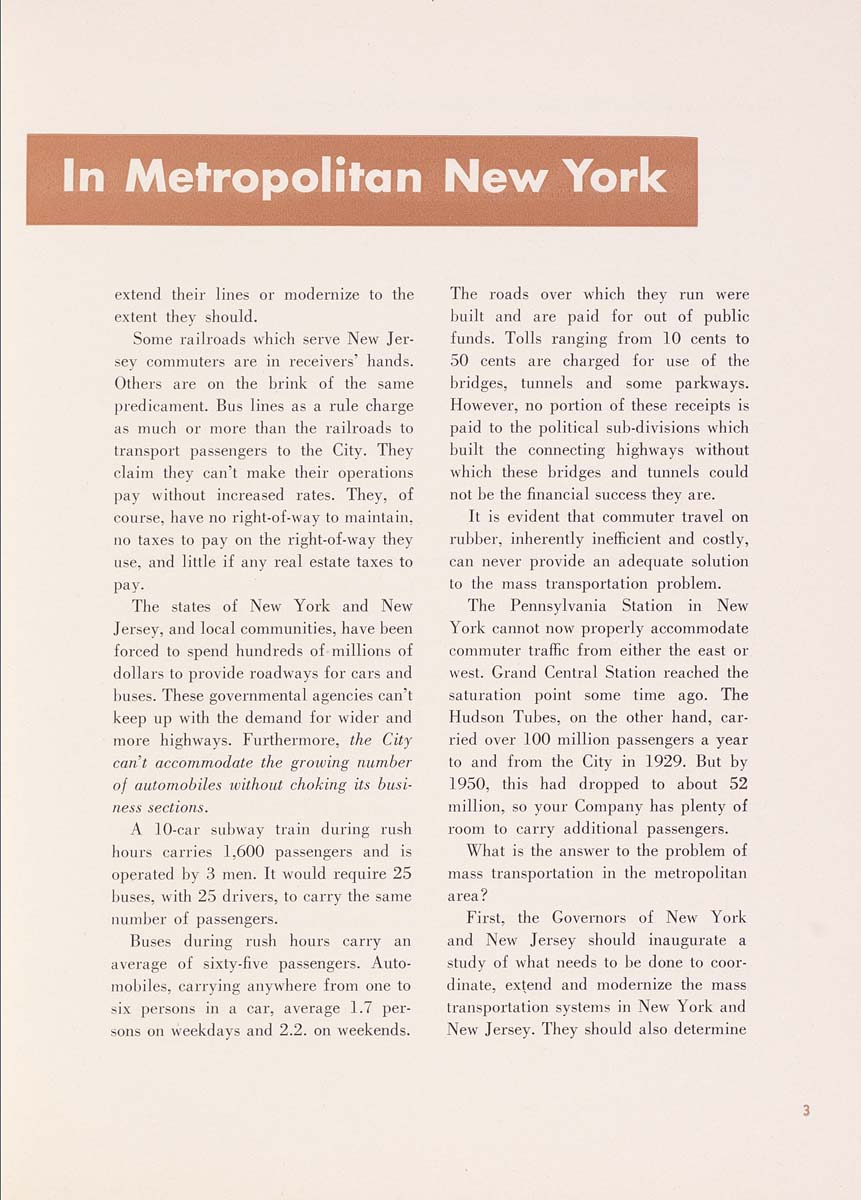Annual report of Hudson & Manhattan Railroad Company
(New York, N.Y. : Hudson and Manhattan Railroad Company )
|
||
|
|
|
|
| 1950: Page 3 |

In Metropolitan Nevf York extend their lines or modernize to the extent they should. Some railroads which serve New Jer¬ sey commuters are in receivers' hands. Others are on the brink of the same predicament. Bus lines as a rule charge as much or more than the railroads to transport passengers to the City. They claim they can't make their operations pay without increased rates. They, of course, have no right-of-way to maintain, 110 taxes to pay on the right-of-way they use, and little if any real estate taxes to pay. The states of New York and New Jersey, and local communities, have been forced to spend hundreds of millions of dollars to provide roadways for cars and buses. These governmental agencies can't keep up with the demand for wider and more highways. Furthermore, the City cant accommodate the growing number of automobiles without choking its busi¬ ness sections. A 10-car subway train during rush hours carries 1,600 passengers and is operated by 3 men. It would require 25 buses, with 25 drivers, to carry the same number of passengers. Buses during rush hours carry an average of sixty-five passengers. Auto¬ mobiles, carrying anywhere from one to six persons in a car, average 1.7 per¬ sons on weekdays and 2.2. on weekends. The roads over which they run were built and are paid for out of public funds. Tolls ranging from 10 cents to 50 cents are charged for use of the bridges, tunnels and some parkways. However, no portion of these receipts is paid to the political sub-divisions which built the connecting highways without which these bridges and tunnels could not be the financial success they are. It is evident that commuter travel on rubljer, inherently inefficient and costly, can never provide an adequate solution to the mass ti'ansportation problem. The Pennsylvania Station in New York cannot now properly accommodate commuter traffic from either the east or west. Grand Central Station reached the saturation point some time ago. The Hudson Tubes, on the other hand, car¬ ried over 100 million passengers a year to and from the City in 1929. But by 1950, this had dropped to about 52 million, so your Company has plenty of room to carry additional passengers. What is the answer to the problem of mass transportation in the metropolitan area? First, the Governoi's of New^ York and New Jersey should inaugurate a study of what needs to be done to coor¬ dinate, extend and modernize the mass transportation systems in New York and New Jersey. They should also determine |
| 1950: Page 3 |







